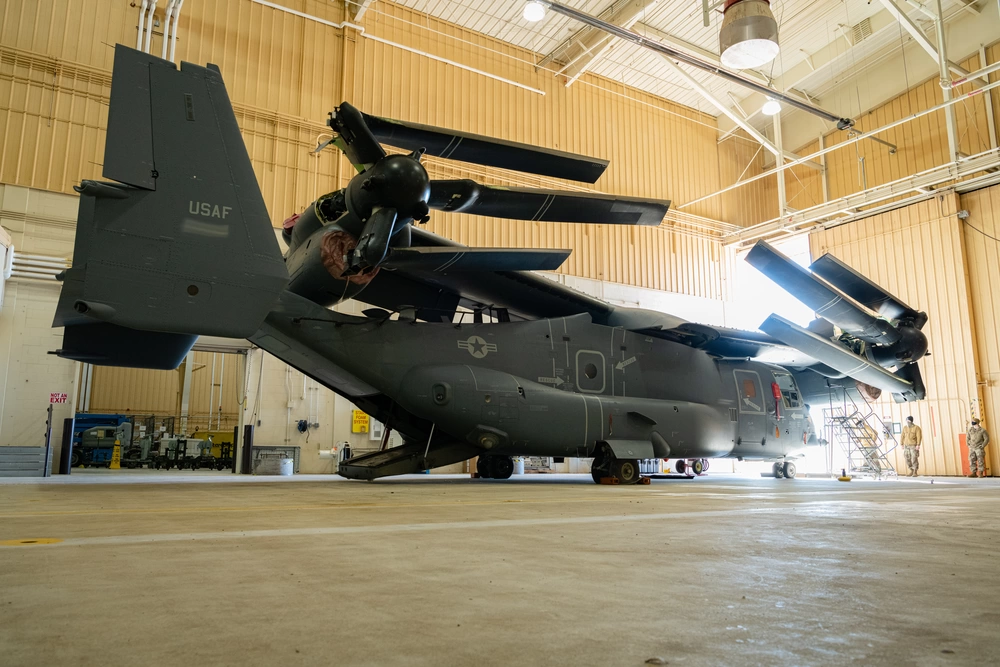U.S. Air Force Airmen assigned to the 20th Special Operations Squadron familiarize themselves with the new nacelle improvement modifications on a CV-22B Osprey tilt-rotor aircraft at Cannon Air Force Base, N.M., Jan. 7, 2022. The improvements should increase aircraft availability and reduce required maintenance actions, leading to increased flying hours. The versatility of the CV-22B offers increased speed and range over other rotary-wing aircraft, which enables the 20 SOS to conduct long-range infiltration, exfiltration, and personnel recovery missions deep into enemy territory.
The Bell Boeing V-22 Osprey is an American multi-mission, tiltrotor military aircraft with both vertical takeoff and landing (VTOL) and short takeoff and landing (STOL) capabilities. It is designed to combine the functionality of a conventional helicopter with the long-range, high-speed cruise performance of a turboprop aircraft. The USMC variant received the MV-22 designation, and the USAF variant received CV-22; this was reversed from normal procedure to prevent USMC Ospreys from having a conflicting CV designation with aircraft carriers. The U.S. Navy plans to use the CMV-22B for carrier onboard delivery duties beginning in 2021.

CV-22B is a U.S. Air Force variant of the U.S. Special Operations Command. The U.S. Air Force (USAF) fielded their version of the tiltrotor, the CV-22B, in 2009. It conducts long-range special operations missions and is equipped with extra wing fuel tanks, AN/APQ-186 terrain-following radar, and other equipment such as the AN/ALQ-211, and AN/AAQ-24 Nemesis Directional Infrared Counter Measures. The fuel capacity is increased by 588 gallons (2,230 L) with two inboard wing tanks; three auxiliary tanks (200 or 430 gals) can also be added to the cabin. The CV-22 replaced the MH-53 Pave Low.
The 20th Special Operations Squadron (Pony Express/Green Hornets) is part of the 27th Special Operations Wing at Cannon Air Force Base, New Mexico. It operates Bell Boeing CV-22 Ospreys on special operations missions. It traces its history back to the activation of the 20th Observation Squadron (Light) at Savannah, Georgia, in March 1942. The squadron conducts day or night low-level penetration into hostile enemy territory, to accomplish clandestine infiltration and exfiltration, aerial gunnery support, and resupply of special operations forces throughout the world. To date, the Green Hornets have flown direct assaults on numerous high-profile targets and effected the rescue and exfiltration of hundreds of US and allied soldiers.















